Original - Odaily
Author - Nan Zhi
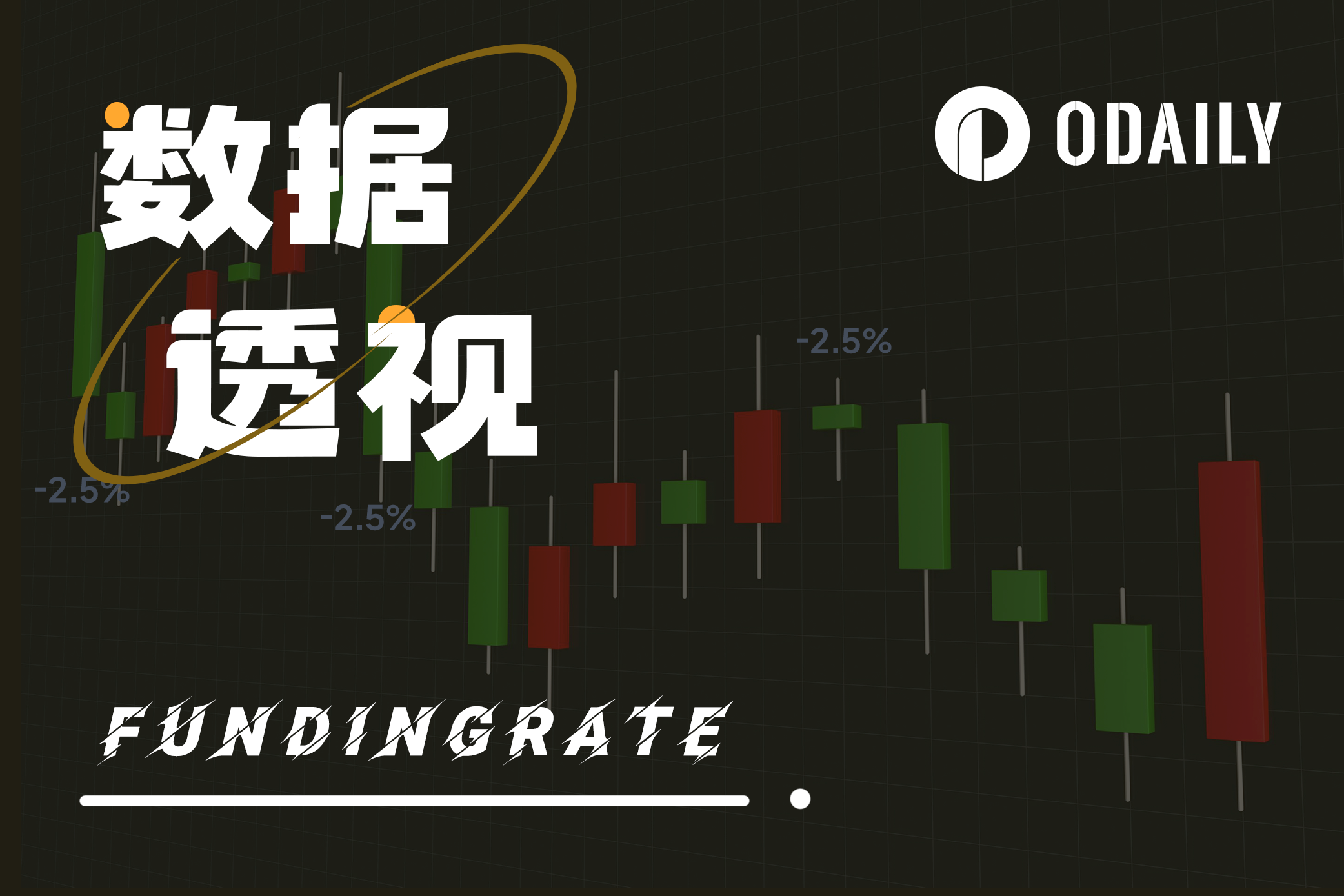
Under the bear market, various trading platforms have repeatedly experienced short squeezes and rising prices for small market capitalization currencies, and funding rates often have large negative values. There are two strategies often used in the market:
Or open a long position to obtain the settlement funding rate before charging the rate;
Or open a short position before settlement and close the position immediately after settlement to obtain the decline caused by closing the long position.
Based on market data, Odaily conducts statistics on the cases where the fee rate on Binance is greater than -0.5%. Based on the multi-time K-line results, it explores only the rise and fall without considering other data.In terms of probability, which strategy has a higher probability of profit?。
(Indicator description:All belowHigh negative ratesAll refer to the situation where the rate is greater than -0.5%;All belowpoleNegative charge rateRefers to the situation where the rate is greater than -1.5%;This article is only a statistical analysis of historical situations and is not an investment guide for subsequent market trends. )
Overall situation
Since 2023, there have been 376 times where the funding rate on Binance has been higher than -0.5%, with an average of -1.209%. The frequency of each rate range is as follows. Among the 376 times of high rates, the rate was greater than -1.5% 113 times, accounting for 30.2%. It can be seen that when the rates begin to turn to high and negative rates, there is a high probability of extremes. .
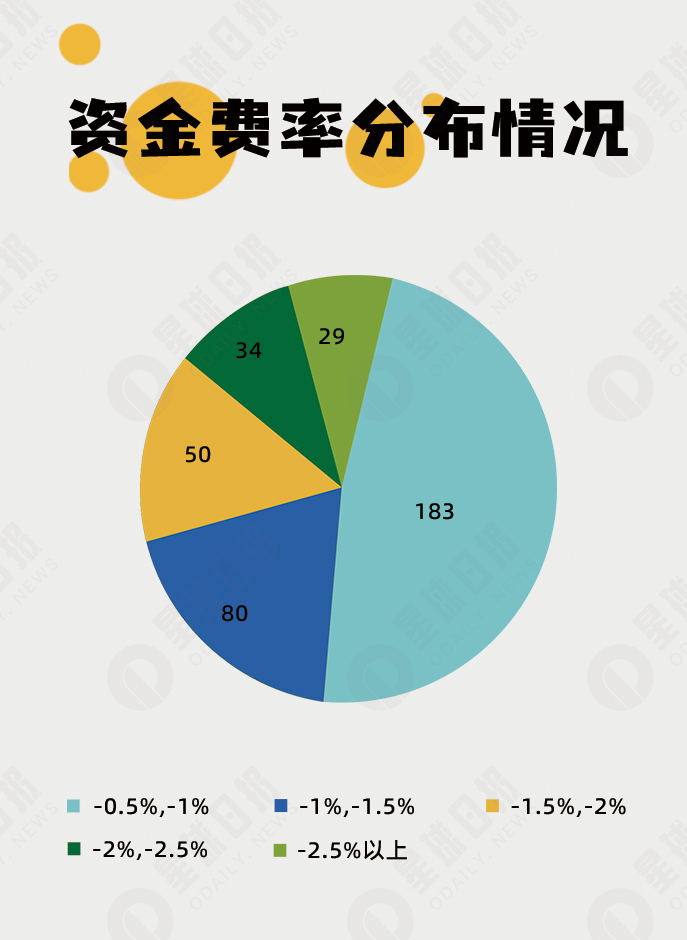
Odaily statistical dimensions are as follows:
time:Includes 1 minute, 3 minutes, 5 minutes, 4 hours, 8 hours, 24 hours.
The short-term funding rate fluctuates greatly after collection, and the lowest point does not necessarily occur within 1 minute after collection, so 1 minute, 3 minutes, and 5 minutes were selected for comparison.
On the other hand, sometimes the short-term market will last for a long period of time, and some long-order users choose to hold it for a long time. Therefore, 4 hours, 8 hours, and 24 hours are selected to observe the probability that long-term market continuation will make long orders profitable.
price:
The lowest price and closing price are selected in the short term, because it is difficult for manual users to close their positions at the lowest point.
In the long term, the highest price and closing price are selected, and the probability of long-term market continuation making long orders profitable is also observed.
The closing price is designed to eliminate the effects of extreme instantaneous fluctuations and is used for comparison with the lowest/highest price.
Short-term situation statistics
The average maximum decline in 1 minute is 1.90%, and the average closing decline in 1 minute is 1.11%;
The average maximum decline in 3 minutes is 2.12%, and the average closing decline in 3 minutes is 1.05%;
The average maximum decline in 5 minutes is 2.26%, and the average closing decline in 5 minutes is 1.07%.
There are several preliminary conclusions based on the comprehensive data of all cases:
Compared with the average fee rate of 1.209%, if the long position is closed within a short period of time after the charging fee rate ends, the probability of profit is very small.
The maximum declines in 1 minute, 3 minutes, and 5 minutes hit new lows continuously, and the corresponding closing prices were close to the same, indicating that the trend during this period was W-shaped and fluctuated violently.
Based on the second point, short positions have a high probability of profit and more opportunities to close positions.
Ten tokens were randomly selected for the graph below. Most of them have obvious W-shaped trends.
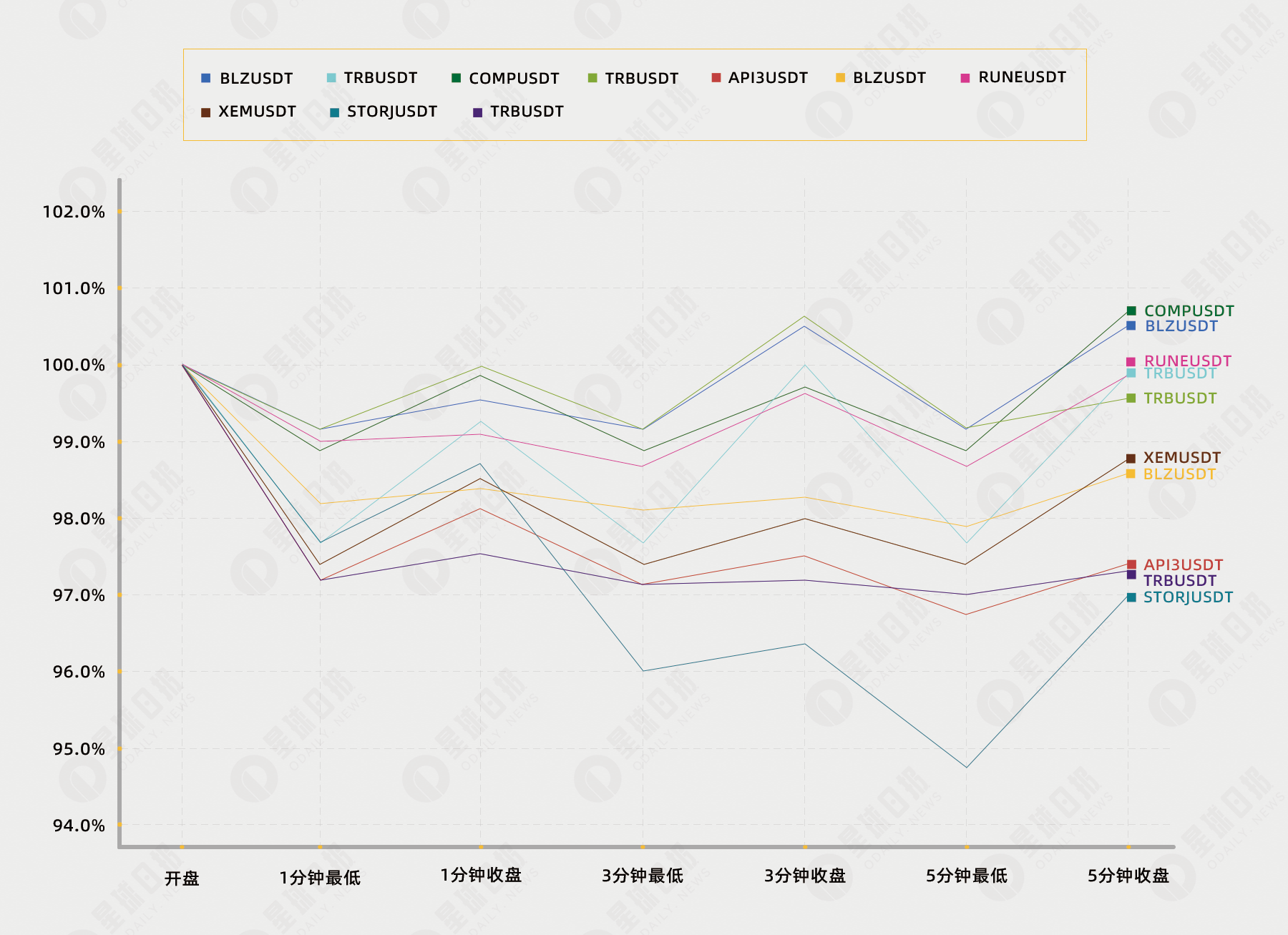
Long term statistics
The 4-hour average maximum increase is 3.73%, and the 4-hour average closing increase is -1.29%;
The 8-hour average maximum increase is 5.84%, and the 8-hour average closing increase is -1.36%;
The average 24-hour maximum increase is 9.5%, and the average 24-hour closing increase is -3.34%;
In summary, the conclusions are as follows:
Compared with the average fee rate of 1.209%, if bulls choose to hold it for a certain period of time, they have the opportunity to obtain both the funding fee rate and the increase in profit.
The maximum increase in 4 hours, 8 hours, and 24 hours continues to rise, but the closing increases are all negative, indicating that within 24 hours, the trend is similar to M during this period, and the fluctuations are violent.
The 24-hour closing price is significantly lower than the 8-hour closing price, which may mean that most negative rate markets end within 24 hours.
Ten tokens were randomly selected for the graph below. Most of them have significant M-shaped trends.
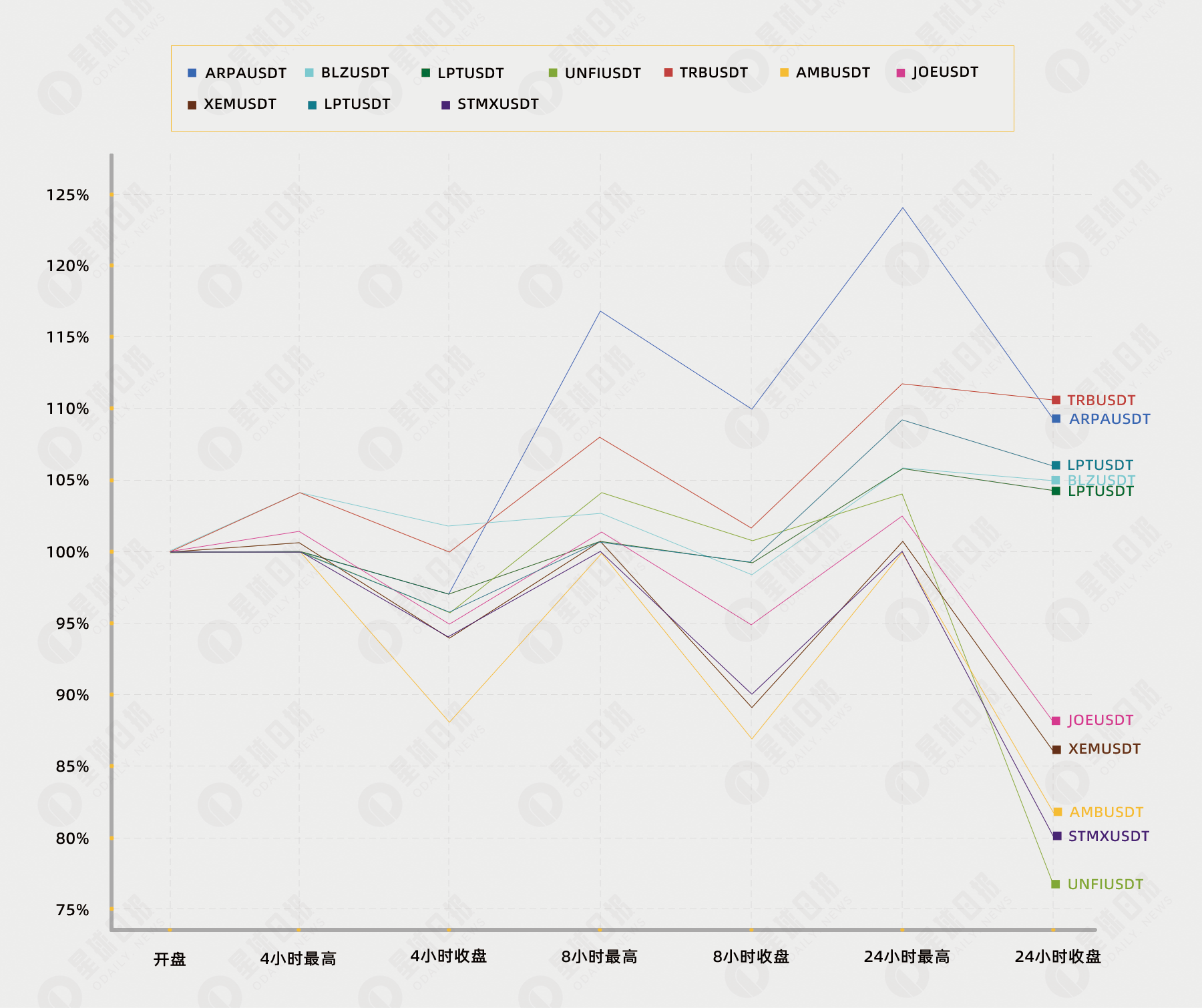
Classification statistics based on frequency and rate levels
The impact of frequency on rates
Frequency:Taking the number of times each token has experienced high negative rates in 2023 as a statistical dimension, a total of 66 tokens are involved. Nearly half of the tokens have only one high negative rate, and more than 10 times of high negative rates. There are only 9 situation tokens.
Average rate:It has not increased significantly with the increase in the frequency of high negative fees. However, tokens such as LPT and TRB all have full negative fees (-2.5% or -3%) when they are widely spread, indicating that when they reach full negative fees Before or after the rate, the rate has been maintained at a moderate negative rate level for a long period of time.
Cumulative rate:The probability of exceeding 15% is low, but for long-term holders, as the price doubles, the income is still considerable in terms of fees.
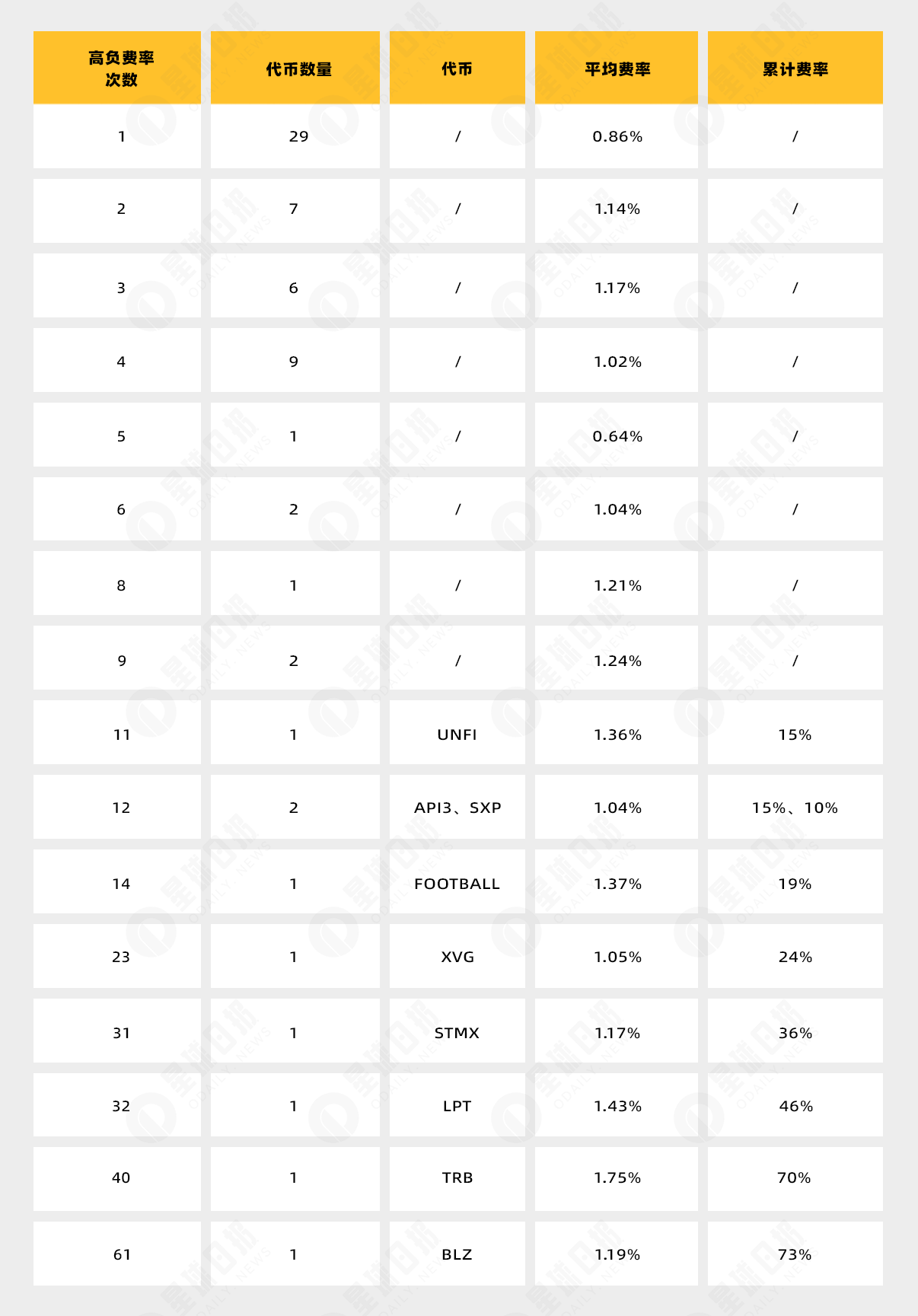
The figure below shows the average fee rate at different frequencies. Only TRB and COMP (five high negative fee rates) have significant deviations from other tokens.

The impact of rates on price trends
This section explores whether the higher the negative rate, the greater the short-term decline and the higher the long-term rise.
The chart below shows the short-term trends for all ranges.
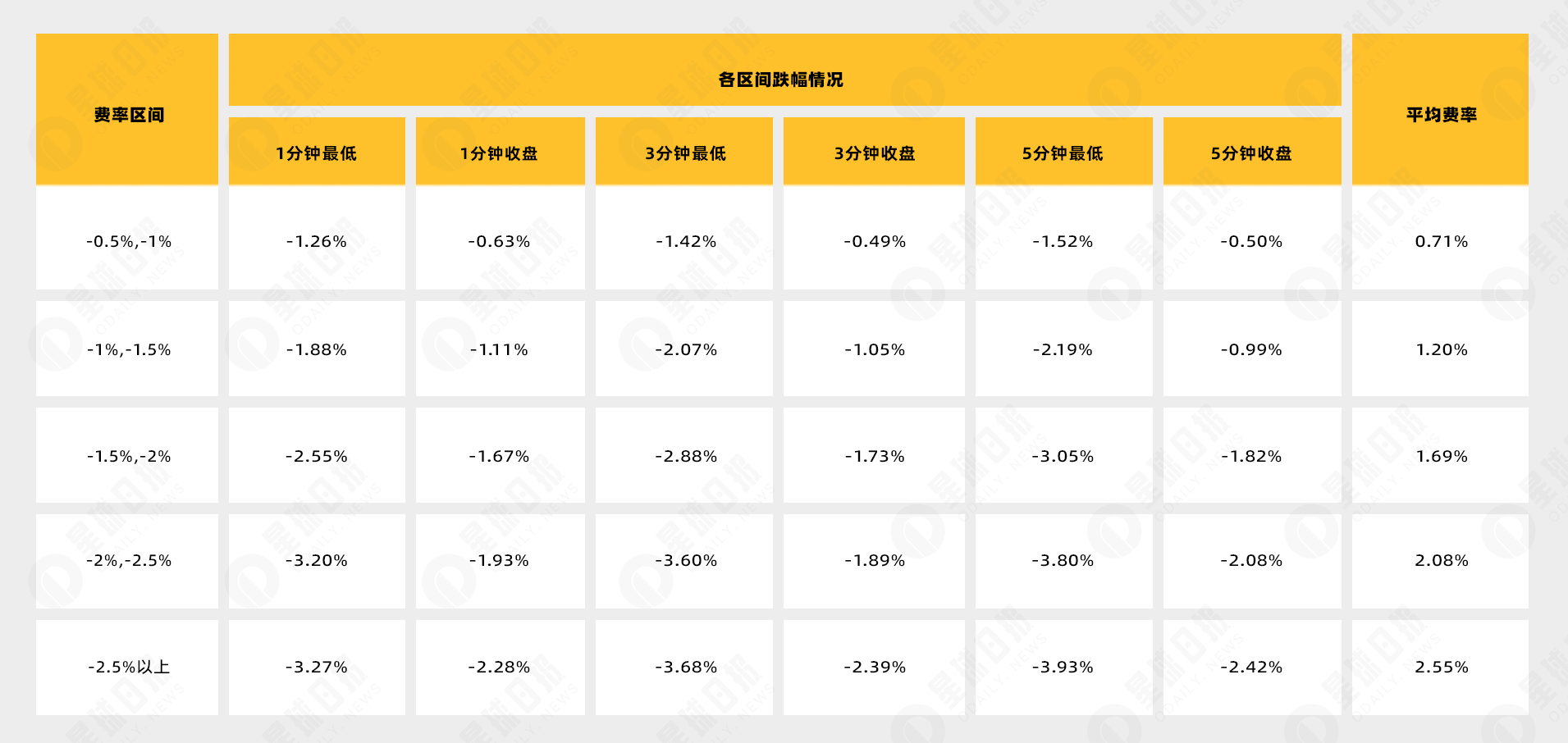
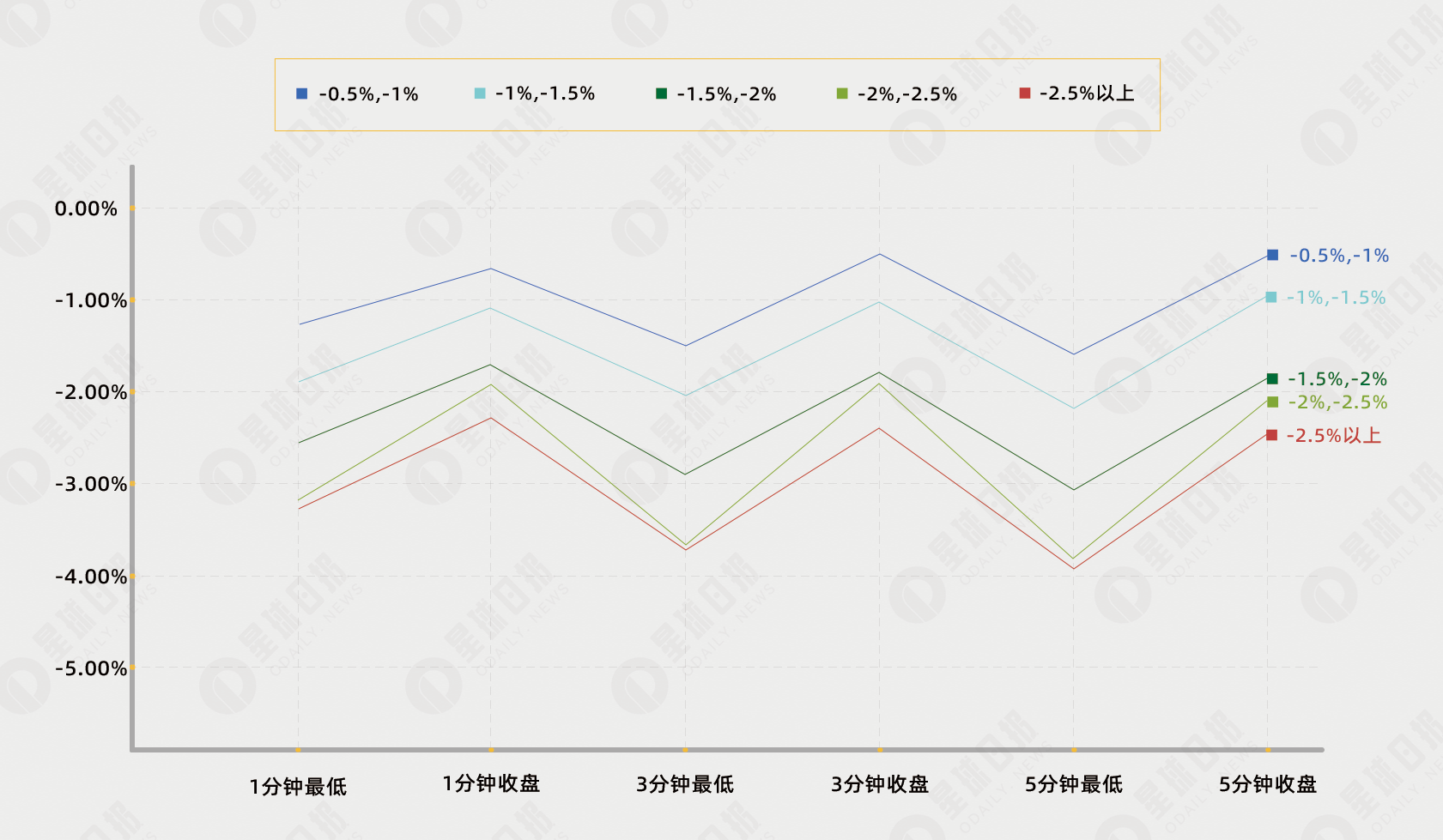
After grading, the short-term rules of each interval are consistent with the overall rules, that is: ① W-shaped trend, ② short positions have the opportunity to close their positions at a profit, ③ long positions have a high profit probability at the closing price;
The higher the degree of negative fee rate, the more severe the short-term decline will be, but the closing price is basically the same as the fee rate.
The chart below shows the long-term trend of all ranges.
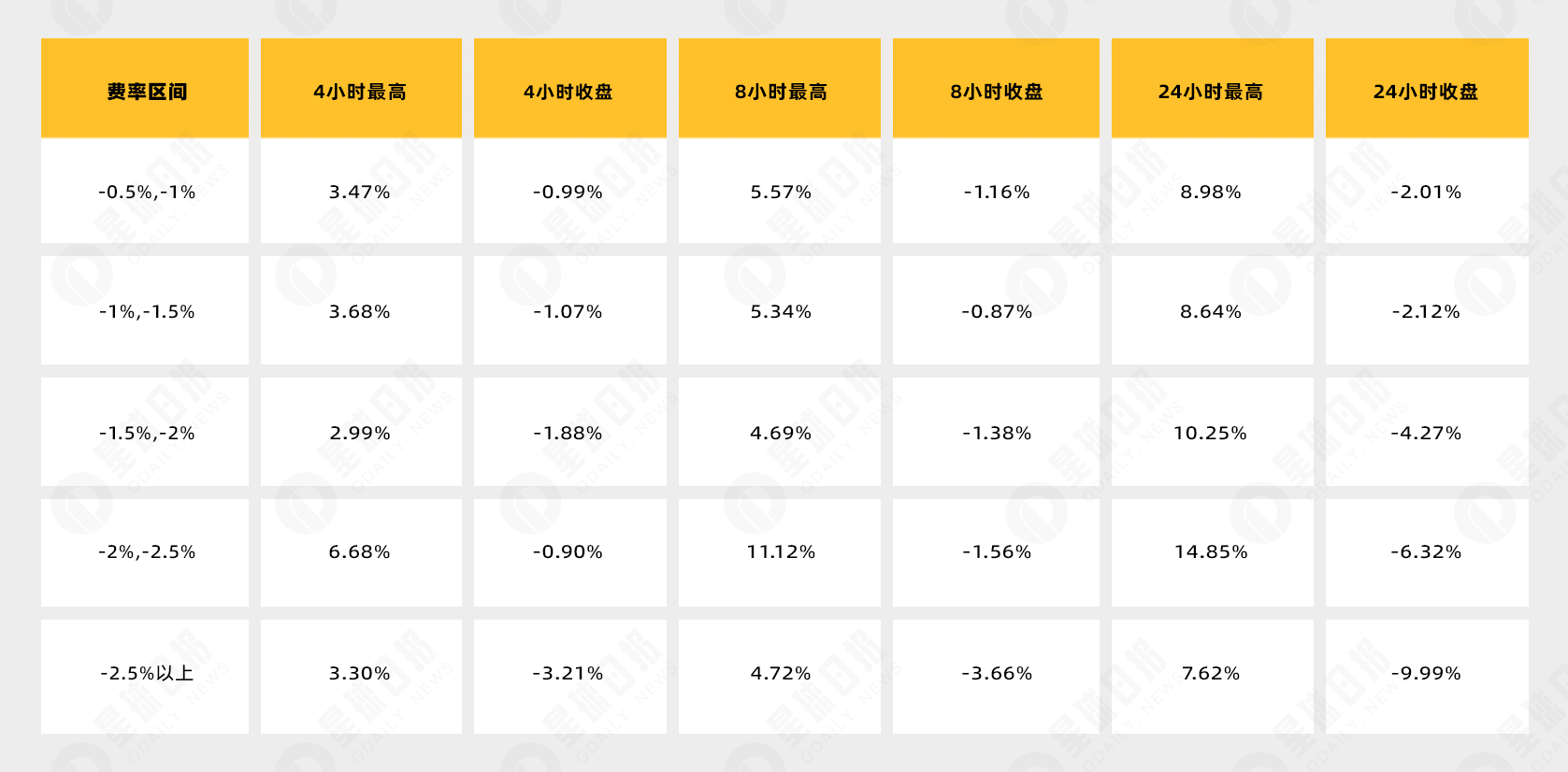
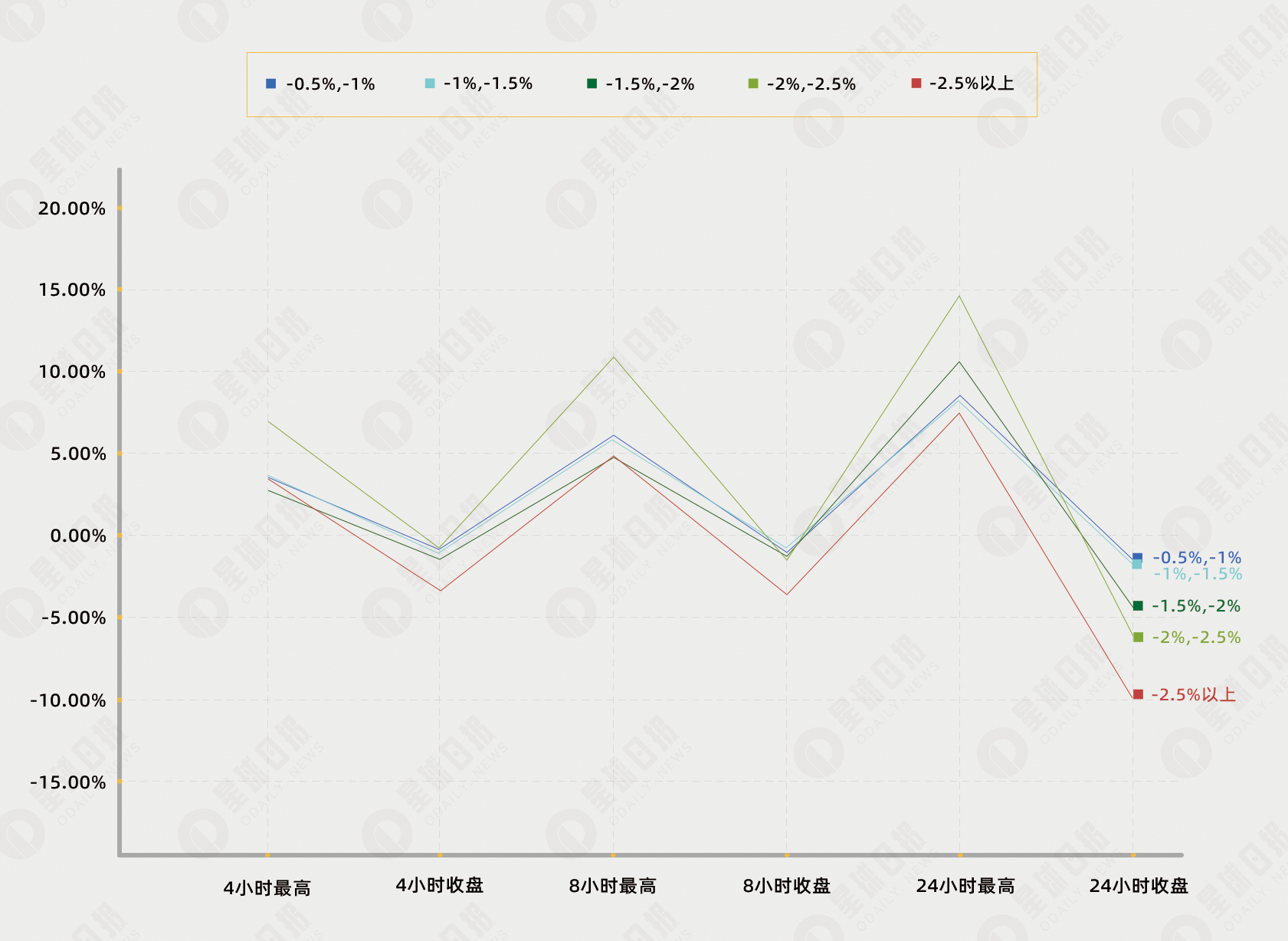
After grading, the long-term rules of each interval are consistent with the overall rules, namely: ①M-shaped trend ②Bulls have the opportunity to close their positions with profit ③The market ends quickly.
The higher the degree of negative rates, the degree of increase does not increase significantly.
The impact of frequency on price trends
short term market
Of the 29 high negative rates for a token that only had one high negative rate,
The maximum drop in 1 minute was greater than the funding rate 28 times, and the profit ratio reached 97%; the closing drop in 1 minute was greater than the funding rate 17 times, and the profit ratio reached 59%;
The profit ratio of the largest decline in 3 minutes is 100%; the profit ratio of the closing decline in 3 minutes is 41%;
The profit ratio of the largest decline in 5 minutes is 100%; the profit ratio of the closing decline in 5 minutes is 48%;
For comparison, LPT has experienced 32 high negative rates:
The maximum drop in one minute was greater than the funding rate 32 times, and the profit ratio reached 100%; the closing drop in one minute was greater than the funding rate 27 times, and the profit ratio reached 84%;
The profit ratio of the largest decline in 3 minutes is 100%; the profit ratio of the closing decline in 3 minutes is 69%;
The profit ratio of the largest decline in 5 minutes is 100%; the profit ratio of the closing decline in 5 minutes is 69%;
Or due to the extremeness of the fee rate, the short profit probability of LPT is significantly higher than that of a single high fee rate.
For comparison, BLZ has experienced 61 high negative rates:
The maximum drop in 1 minute was greater than the funding rate 61 times, and the profit ratio reached 100%; the closing drop in 1 minute was greater than the funding rate 46 times, and the profit ratio reached 75%;
The profit ratio of the largest decline in 3 minutes is 100%; the profit ratio of the closing decline in 3 minutes is 69%;
The profit ratio of the largest decline in 5 minutes is 100%; the profit ratio of the closing decline in 5 minutes is 62%;
In the case of BLZs extreme rates, the probability is similar to that of LPT, which is also significantly higher than the single high rate.
It can be seen that whether it is a short-term high negative fee rate or a clear short-squeeze rising market, the short-term dimension isShort dominance。
Long term market
Similarly, among the 29 high negative rates,
The largest 4-hour increase was greater than the funding rate 29 times, with a profit ratio of 100%; the 4-hour closing increase was greater than the funding rate 10 times, with a profit ratio of 34%;
The profit ratio of the largest increase in 8 hours is 100%; the profit ratio of the closing increase in 8 hours is 31%;
The profit ratio of the largest increase in 24 hours is 100%; the profit ratio of the closing increase in 24 hours is 34%;
For the long term, due to the characteristic of quick end of the market mentioned above, the probability of long closing profits is significantly reduced.
The highest point depends entirely on personal trading skills, for reference only, but it also illustratesThe charging rate is not the end of the market.
The four tokens with the highest frequency of high rates were also selected for statistics, but because they were selected based on the short-squeeze market that had occurred,This statistic has significant sampling bias and this section is for reference only, it has little guiding significance for subsequent similar situations.
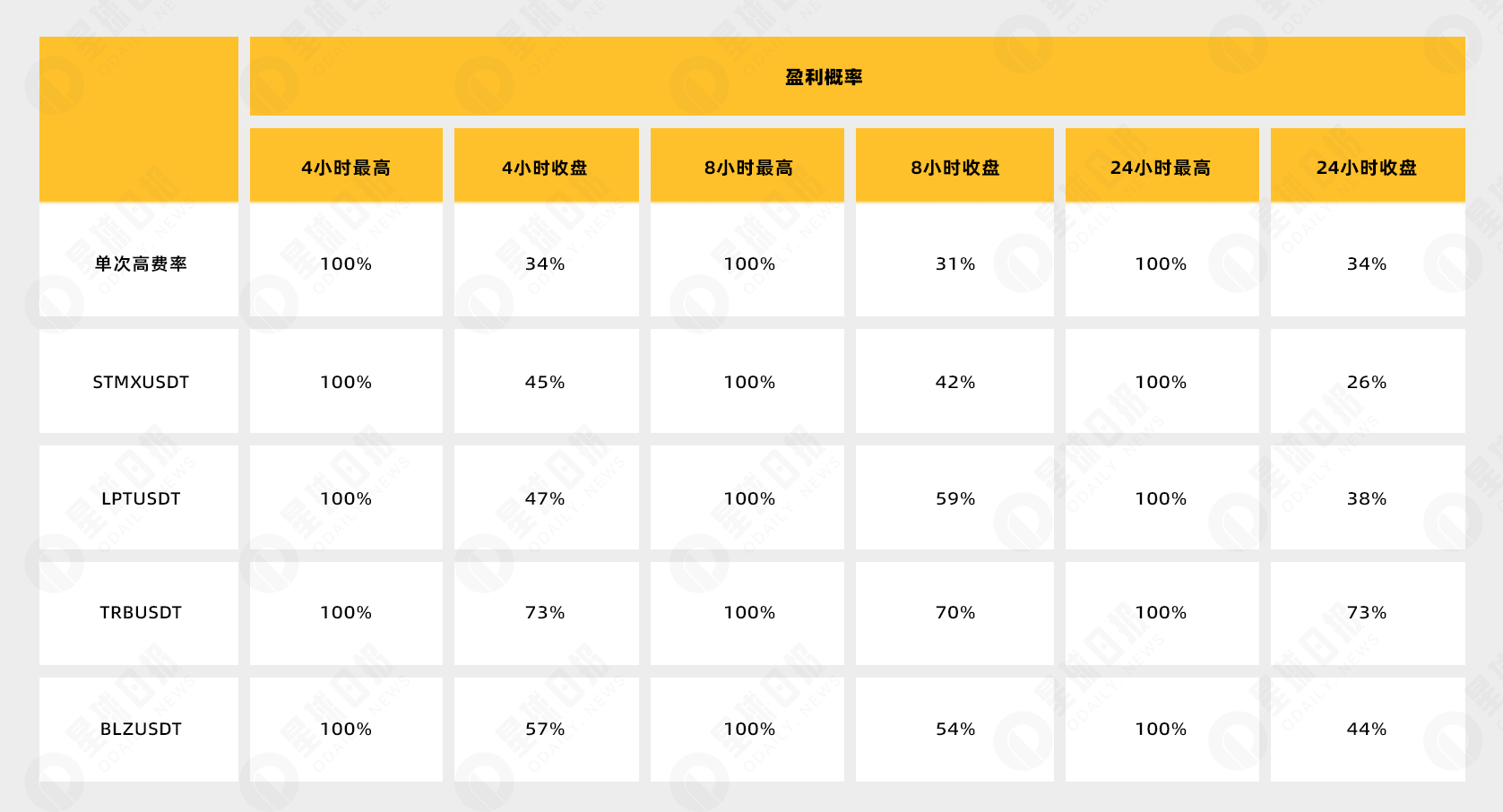
in conclusion
Based on Binance’s high negative fee situation in 2023, Odaily conducted data statistics on the following two strategies:
Long strategy: open long before charging the fee to obtain the settlement funding rate;
Short strategy: Open a short position before settlement and close the position immediately after settlement to obtain the decline caused by the closing of the long position.
At the short-term operation level, the short strategy has a clear advantage in probability. Even at the closing price, short positions account for the majority of profits.
At the long-term operation level, the long strategy has a slight advantage in probability. After the occurrence of high negative interest rates, there is usually still an upward trend.



